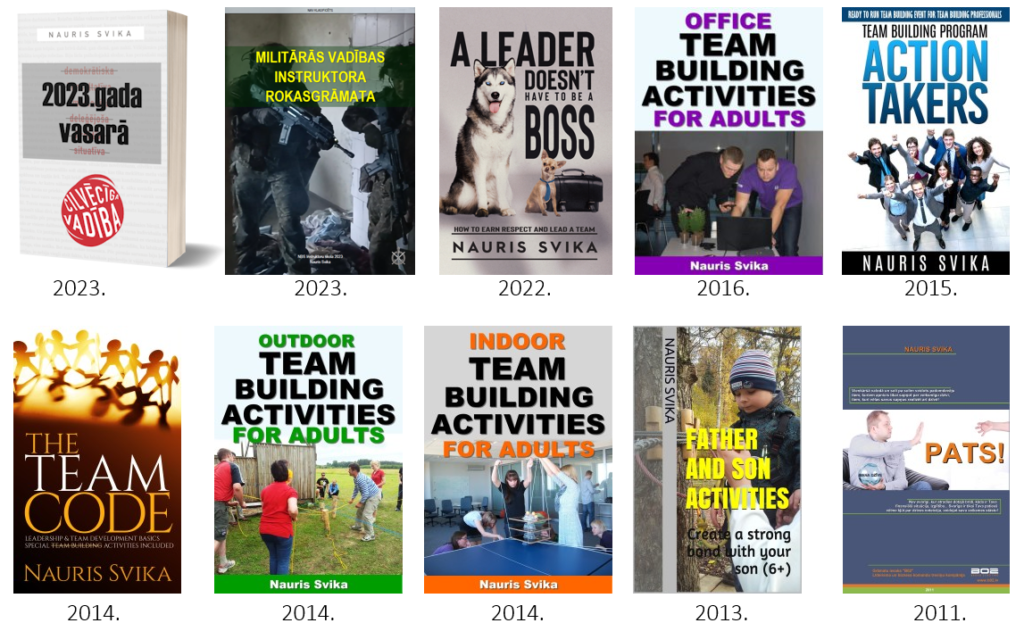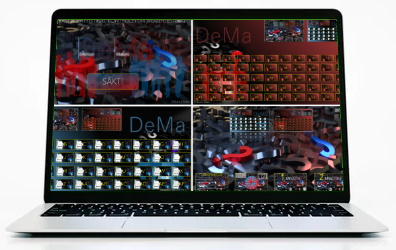BUSINESS CONTINUITY (BC) PROCEDURES AND TEAMWORK DEVELOPMENT
Development, testing, and improvement of emergency situation and business continuity (crisis management) team operations, creating a sense of preparedness and confidence in case the unwanted happens.
WHAT IS IT?
There are companies whose specifics require specific actions for non-standard situations with high intensity. Some call them crisis management teams, others refer to them as business continuity (BC) teams, and some call them emergency response teams. The names vary, but the goal is the same – to organize the necessary processes in complex and high-intensity short-term situations, such as:
Each company has specific, unique, and different situations. There are no two identical situations and solutions. Such cases require, at a minimum, documentation with recommended content, which includes at least operational guidelines, specific team compositions, situation analysis, and more. In most cases, the main documentation is supplemented with operational instructions in the appendices.
WHY IS THIS RELEVANT?
The main thing to understand... These are not standard situations that staff encounter daily. They are high-intensity circumstances with strong psychological pressure, much higher stakes in the decision-making process, and often the balance of decisions is not 70/30 or 60/40, but even reaches a 49.9/51.1 level, which only intensifies the tension and the diversity of opinions with rapidly depleting time resources. The main mistake is assuming that the company is ready for this without preparation, and that merely having formally prepared documentation is enough. The main challenges are related to the fact that...
We express our sincere gratitude for the excellently delivered training session on "Crisis Management Team.
The content of the training was very well-structured and perfectly tailored to the specific situation and needs of our company. We especially appreciated the inclusion of real-life examples and scenarios, which helped us better understand potential crisis situations and strategies for resolving them.
The interactive approach and the ability to engage the audience created a positive atmosphere, which was crucial in developing practical action plans. Discussions and group work enabled participants to share experiences, ask important questions, and deepen their understanding of the topic.
The active involvement of participants and the professional attitude fostered a motivating and constructive learning environment. This type of training is definitely recommended for other companies looking to improve their preparedness for crisis situations.
Ieva Bruna - Labane
Personnel Development Manager, Latvian State Roads Maintenance Company
WHAT ARE THE SOLUTIONS?
I never considered the relevance of such a problem and the need for assistance until 2022, when a company reached out against the backdrop of the war in Ukraine. After a one-day program, several shortcomings were discovered in the crisis management plan, which were relatively easy to fix. Among the shortcomings were unnecessary processes that needed to be discarded or simplified, as well as missing elements. Step by step, other organizations began to reach out for plan reviews and documentation improvements. As a result, three main solutions have been developed, which can be implemented either separately or as a unified, comprehensive project.
Development of BC process documentation guidelines.
For organizations that recognize the importance of business continuity documentation but lack the internal expertise to develop it, we offer a practical solution. The organization outlines its current situation and provides all necessary information. Based on this input, we create a clear, practical, and easy-to-use business continuity (BC) plan. If needed, the organization can engage legal counsel to formalize the documentation as an internal regulatory policy. The full documentation can typically be prepared within one month.
Testing the existing BC documentation with a theoretical situation simulation.
Review of Existing Documentation Through Theoretical Scenario Simulations. This process primarily uses WG and TDG methods. In simple terms, we design customized training scenarios that are played out theoretically — either in a single location or across multiple sites — to help teams gain practical insights and experience.
At the beginning of the program, the scenario is played out slowly and carefully, step by step, while strictly following the documented procedures. By the end of the program, the same process is run in real time, simulating an actual emergency or disruption.
In most cases, this exercise requires one full working day and the active participation of the designated response team.
This hands-on approach offers a completely different perspective for testing an organization’s plans — one that internal teams often miss due to "functional blindness" caused by familiarity. It’s similar to how we stop noticing a missing baseboard at home after a renovation, but a visiting guest spots it instantly.
Testing the existing BC documentation with a practical situation simulation.
This process is recommended only if the company already has high-quality documentation that has, at a minimum, been tested with theoretical methods in at least three different situations. This is the most complex but also the most effective process. The process lasts one day, divided into two phases: a practical situation simulation, followed by process analysis, gathering insights, and improving the documentation.
Building a Resilient Emergency Response System at Riga National Zoo
The Riga National Zoo, in its development process, encountered the need to establish a modern and effective internal and external security risk response team.
A team without a system is not viable.
A system without an inspirer is not of high quality.
Procedures—or content—without an understanding of reality are not modern.
As a result, in 2024, we began a collaboration with Nauris Svika, under whose guidance we created a structured model for organizational response to internal and external threats. Initially, there were floating ideas, desires, and echoes of best practices from other zoos. Nauris brought structured logic to this "cocktail" and, after familiarizing himself with the industry and its specifics, the team and its capabilities, developed his own vision of the necessary steps within a defined timeline and scope.
The process also included the development of documentation, which is an essential part of ensuring continuity. We thought together, we learned together—and as a result of the staff’s training and practical sessions, a motivated and responsible internal emergency response team has been formed. In addition, a system has been created that is understandable to all employees and continuously helps them feel more knowledgeable and prepared for non-standard situations.
The system is kept active thanks to the questions raised during Nauris’s collaboration, which remain as a kind of handbook for the manager.
Anete Bilzena
Riga National Zoo / Member of the Board
WHY NAURIS SVIKA?
Nauris is one of the few specialists offering programs in this field, combining crisis management team operation algorithms with High Performance Team algorithms. His experience includes the full operational cycle, from documentation development to practical situation simulations across various industries (e.g., construction, transportation, logistics, leisure, etc.). The documentation development process is usually carried out in collaboration with one of the company's qualified specialists, while the development of the situations to be simulated remains confidential until the event day. Nauris is focused on the company’s interests and ensuring effective operational processes, rather than merely filling out the formalities required by services, which are sometimes crucial but at other times bureaucratic. Nauris has several years of experience in leading teams in high-intensity conditions, developing and testing various plans.




















